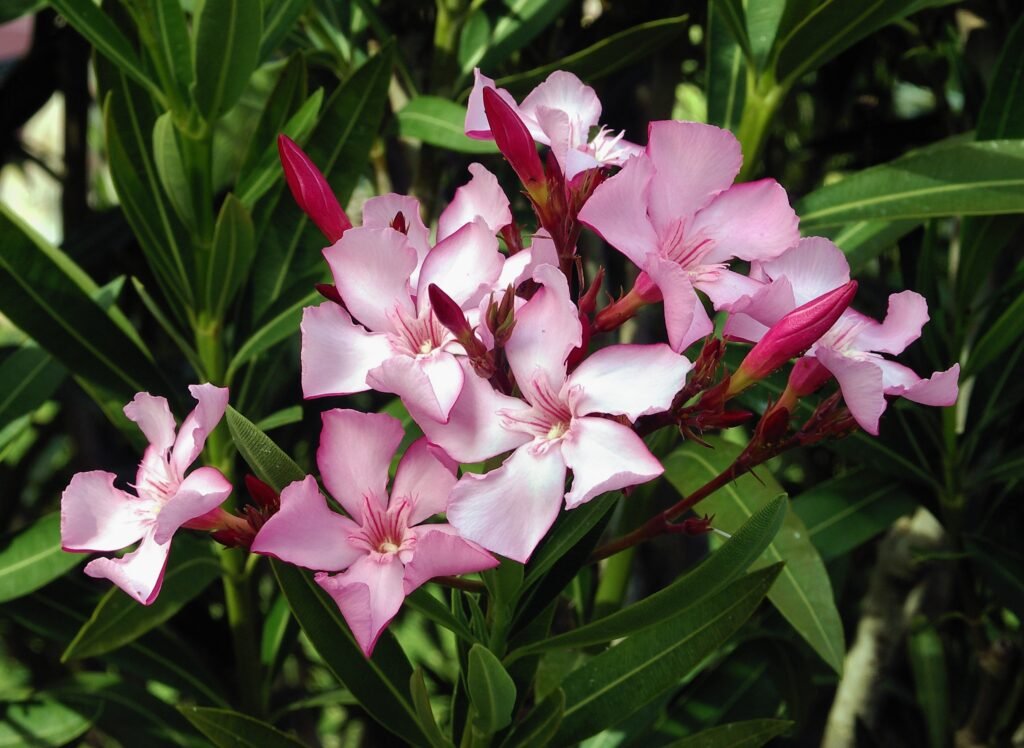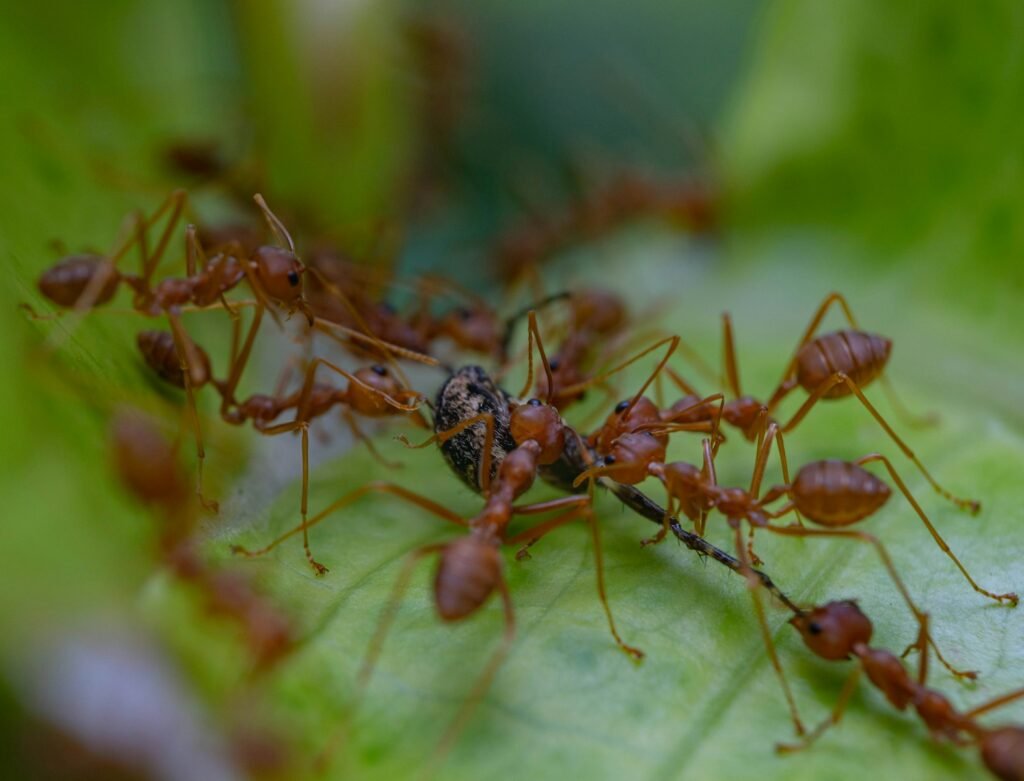Oleander (Nerium oleander) is a stunning ornamental shrub renowned for its vibrant flowers, which can be pink, red, white, or yellow. It thrives in warm climates and often adorns gardens and public spaces. However, its beauty masks a dangerous secret: every part of the oleander plant is highly toxic. If ingested, it can cause severe digestive issues, heart problems, and even death. Handling the plant may also cause irritation to the skin. Despite its danger, oleander continues to be a popular choice for landscaping due to its showy appearance and adaptability.
Belladonna: The Deadly Nightshade
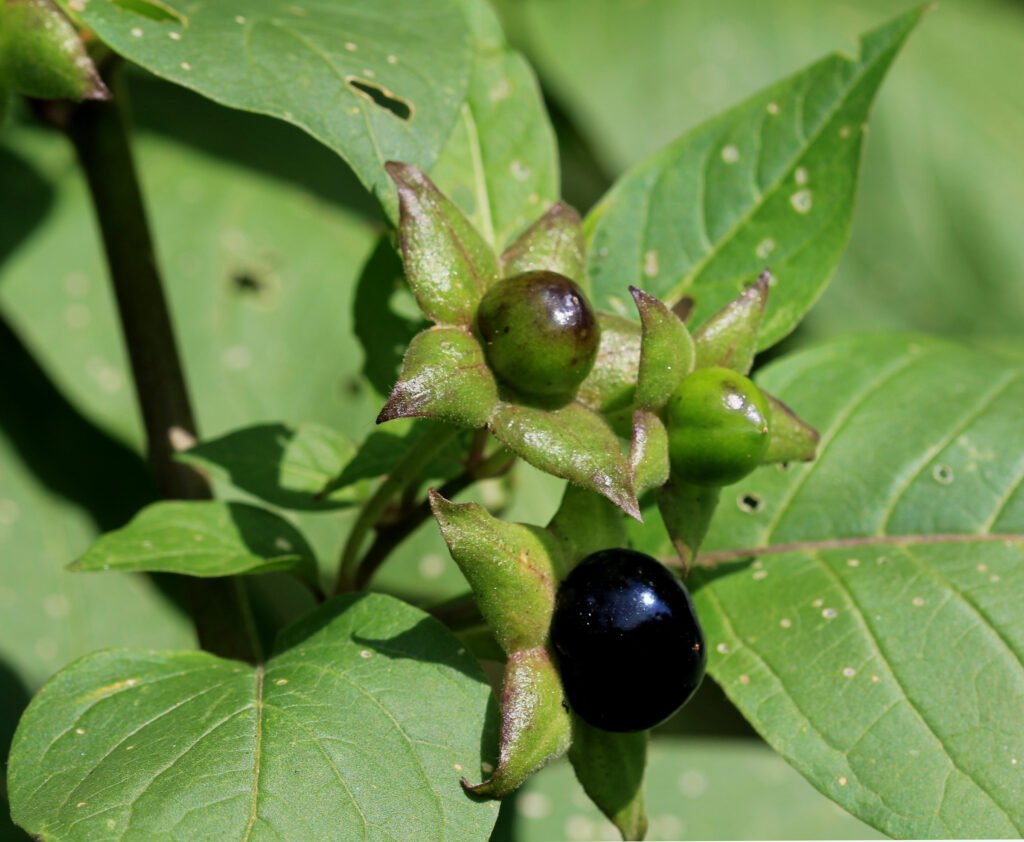
Belladonna (Atropa belladonna), also known as deadly nightshade, has a long history intertwined with myths and folklore. Its glossy black berries and bell-shaped purple flowers are alluring, yet they hide potent toxins, including atropine and scopolamine. Small quantities can lead to delirium, hallucinations, and, ultimately, death if not treated promptly. Historically, belladonna was used in medicine and cosmetics, and its intoxicating effects were both feared and desired, giving it a mysterious allure throughout the ages.
Castor Oil Plant: Toxic Seeds with a Gleaming Appearance
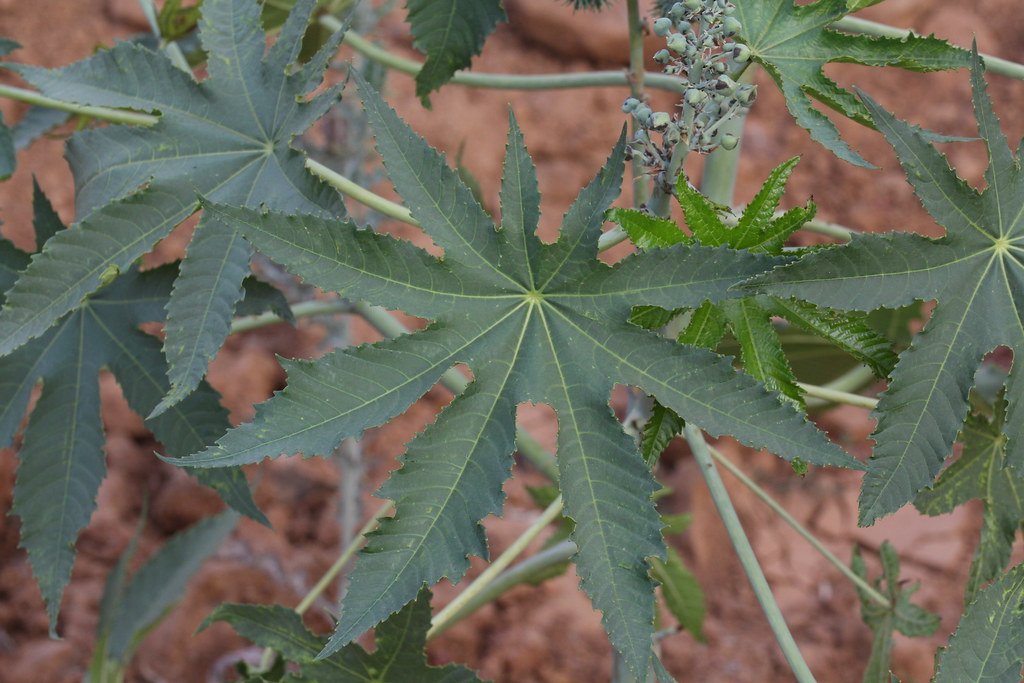
The castor oil plant (Ricinus communis) is recognized for its attractive foliage and seed pods, making it a favored ornamental plant in many gardens. However, its seeds contain ricin, a toxin that is highly lethal even in small doses. Despite this danger, the plant is cultivated widely because the non-toxic oil derived from the plant is valuable in the industrial and pharmaceutical sectors. Nonetheless, caution is advised to avoid ingestion or inhalation of the seeds or their dust.
Jimsonweed: A Hallucinogenic Hazard
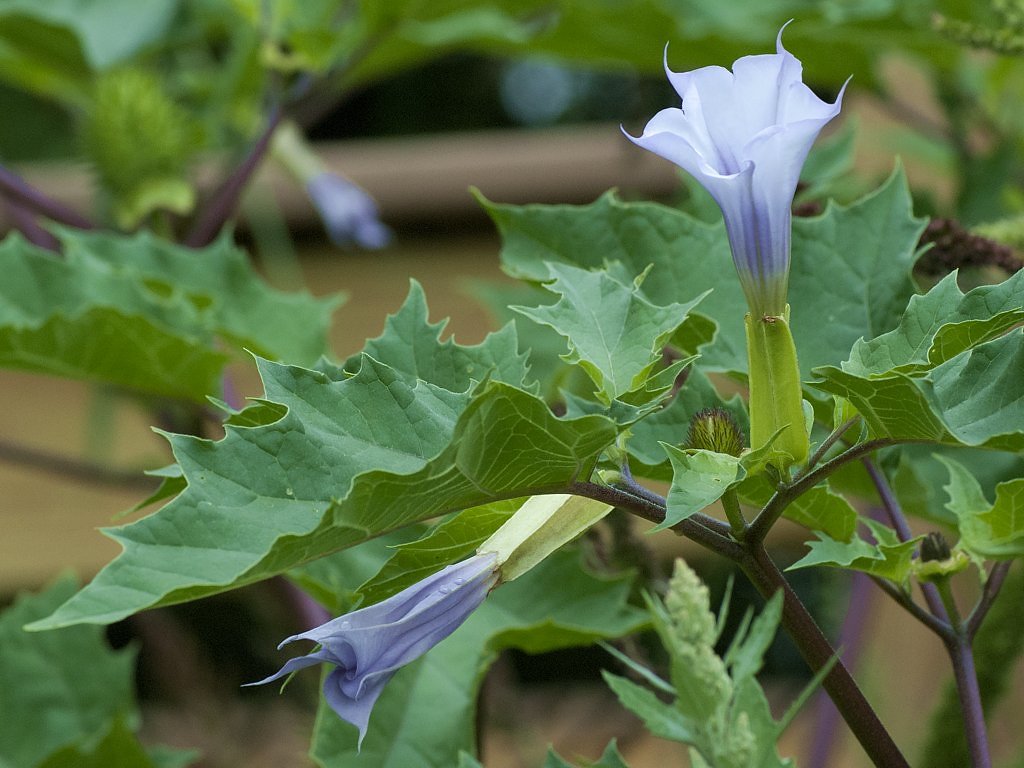
Jimsonweed (Datura stramonium) is notable for its trumpet-shaped flowers and thorny seed capsules. It has a place in history as a hallucinogenic plant used by various cultures. However, the plant is extremely toxic, with all parts containing tropane alkaloids that can cause severe poisoning. Symptoms include hallucinations, convulsions, breathing difficulties, and potentially death. The ethereal beauty of jimsonweed hides the risk it poses to humans and animals alike.
Water Hemlock: A Lurking Danger Near Water
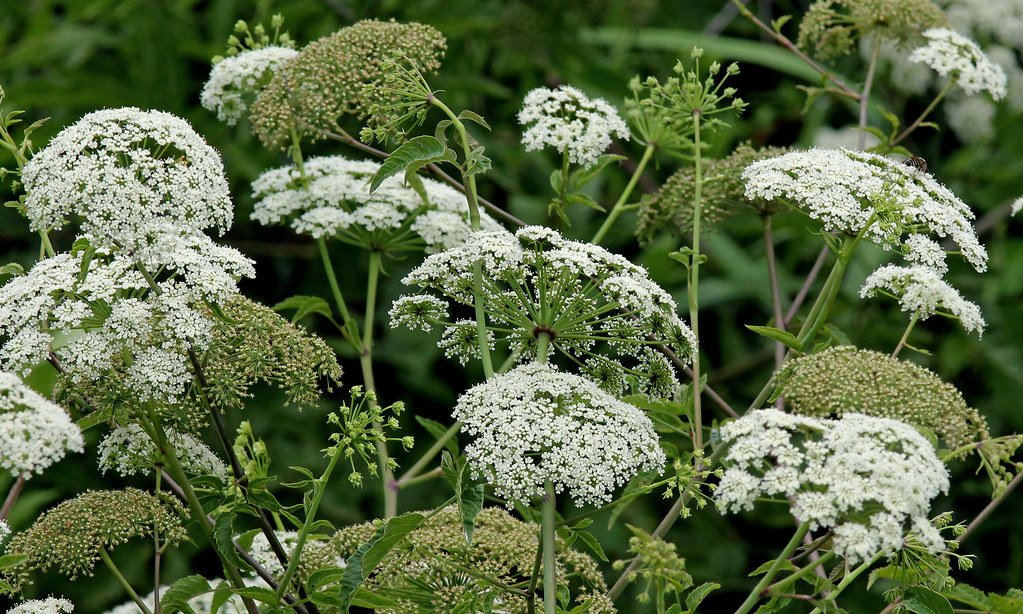
Water hemlock (Cicuta spp.) is a perennial plant found near marshes and wetlands, easily mistaken for similar non-toxic plants. It produces small white flowers arranged in umbrella-like clusters. The plant is infamously known as one of North America’s most poisonous plants, with cicutoxin present primarily in its roots. Ingesting even a small amount can lead to violent convulsions and death. Thus, it’s essential to be vigilant and properly identify this plant while exploring natural settings.
Aconite: Monkshood with a Moniker of Death
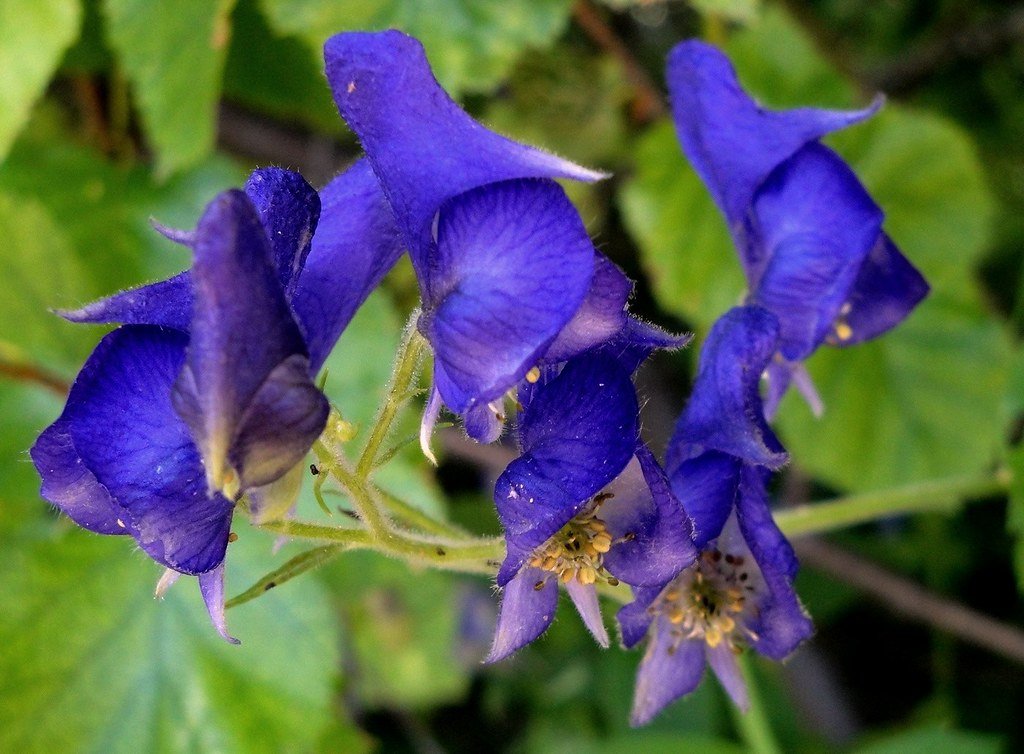
Aconite (Aconitum), commonly known as monkshood, is an imposing plant with striking blue or purple flowers resembling the hood of a monk. Its beauty belies its deadly nature; the entire plant contains potent alkaloids such as aconitine. Even minimal exposure, through skin contact or ingestion, can result in muscle paralysis, arrhythmias, and death. Historically, aconite was used as a poison in both warfare and hunting, demonstrating its feared potency across cultures.
Manchineel: The Tree of Death
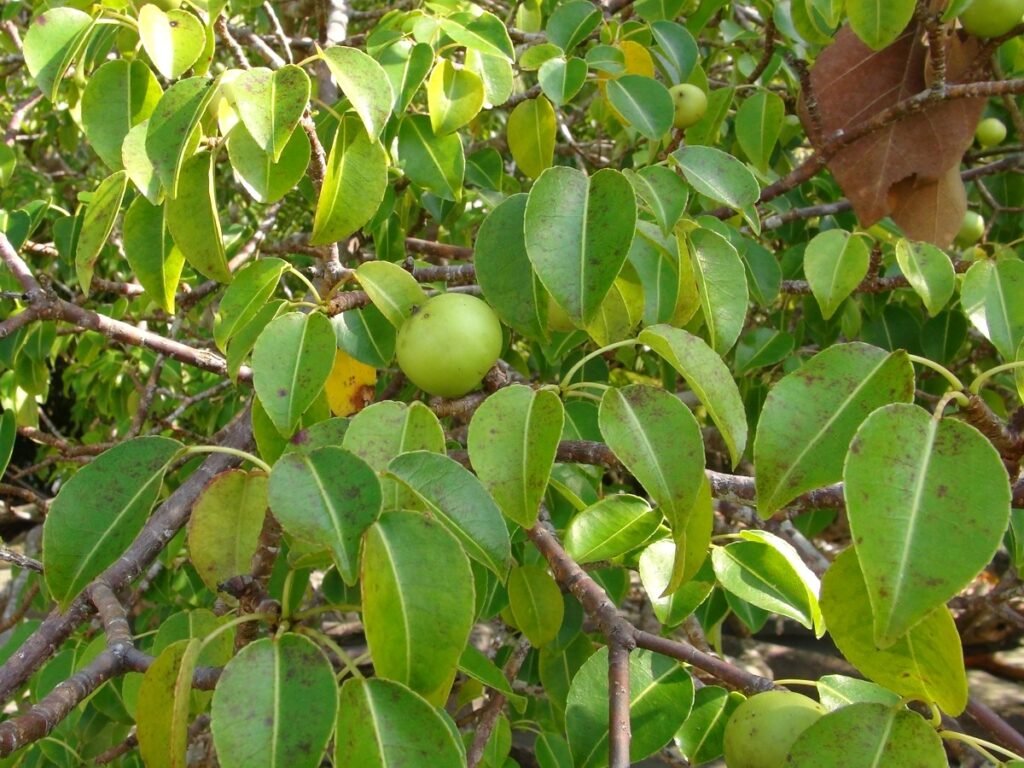
The manchineel tree (Hippomane mancinella) is native to the Caribbean, Gulf of Mexico, and parts of Central America. All aspects of the tree are toxic, including its innocuous-seeming fruit, resembling small apples. The latex from the tree causes skin irritation and blistering, making it dangerous even to touch. The tree’s toxins can also pose risks if smoke from burning wood is inhaled. Known as the “tree of death,” manchineel stands as a testament to the danger hiding in plain sight.
Rosary Pea: Seeds of Violence
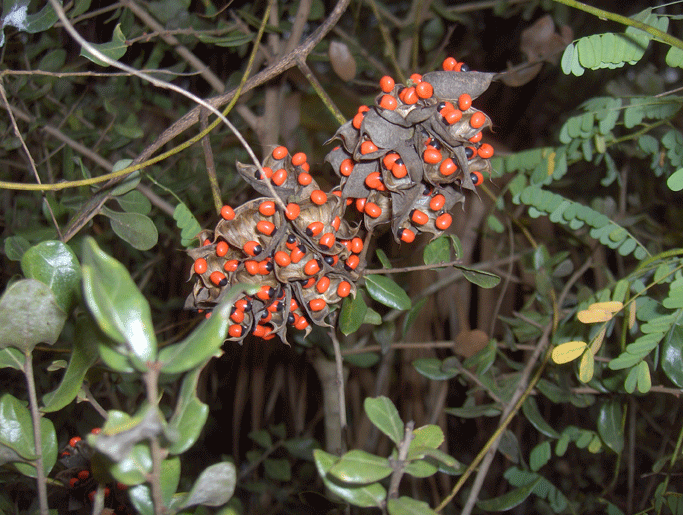
The rosary pea (Abrus precatorius) is a climbing plant whose seeds are used in jewelry for their striking red coloration with a black spot. However, these seeds contain abrin, an extraordinarily potent toxin. Just one seed can be fatal if chewed and ingested. The plant is native to tropical regions but is cultivated in other areas for ornamental purposes. Extreme care is necessary when handling the seeds to avoid accidental poisoning.
Angel’s Trumpet: Bewitching but Brutal
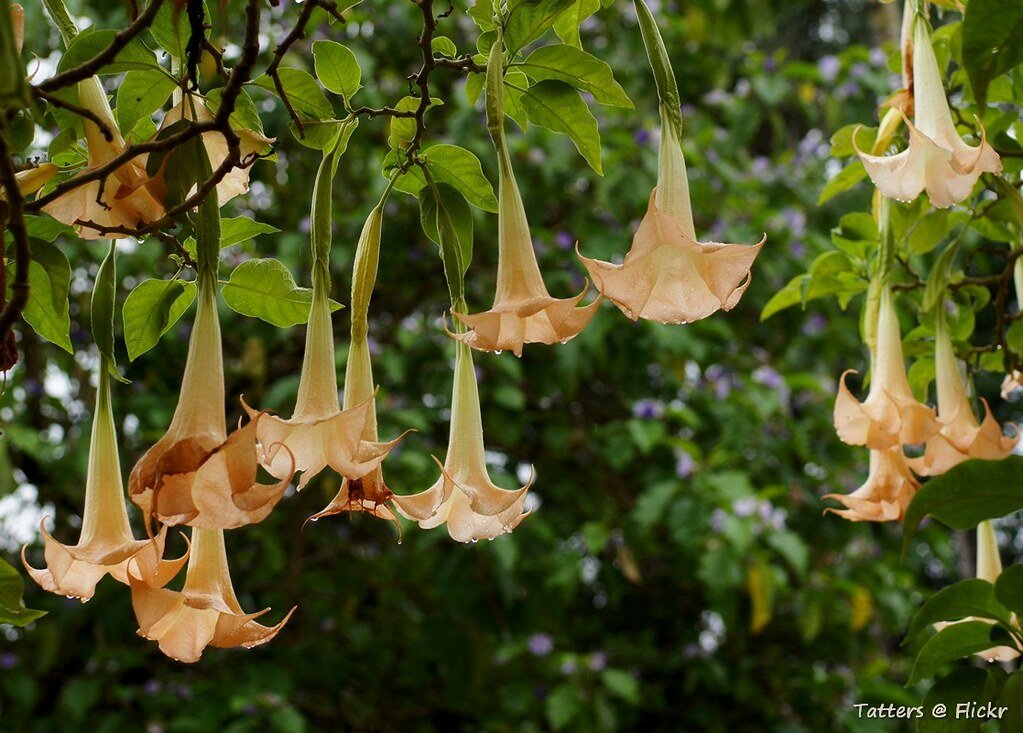
Angel’s trumpet (Brugmansia spp.) is a visually captivating plant featuring pendulous, trumpet-shaped flowers in various colors. Despite its angelic appearance, the plant is highly toxic, containing tropane alkaloids that can cause hallucinations, paralysis, and even death. Historically used in shamanic rituals for its mind-altering properties, angel’s trumpet requires careful handling to avoid the dangerous effects resulting from exposure.
White Snakeroot: Unseen Danger in Pastures
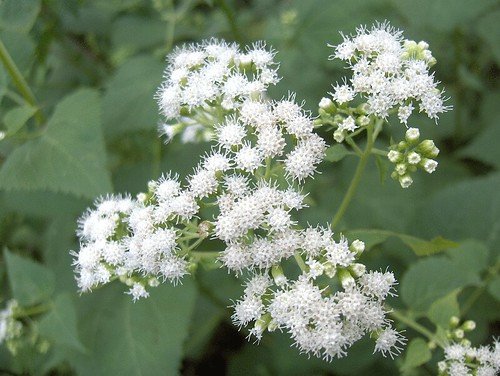
White snakeroot (Ageratina altissima) is a perennial herb native to North America, often found in wooded areas and pastures. It is renowned for causing milk sickness in the 19th century when livestock grazed on the plant, transferring toxic tremetol into milk and meat consumed by humans. Symptoms include nausea, vomiting, and ultimately, death if not treated. Although less common today due to better livestock management, white snakeroot serves as a historical reminder of the perilous beauty present in nature.

